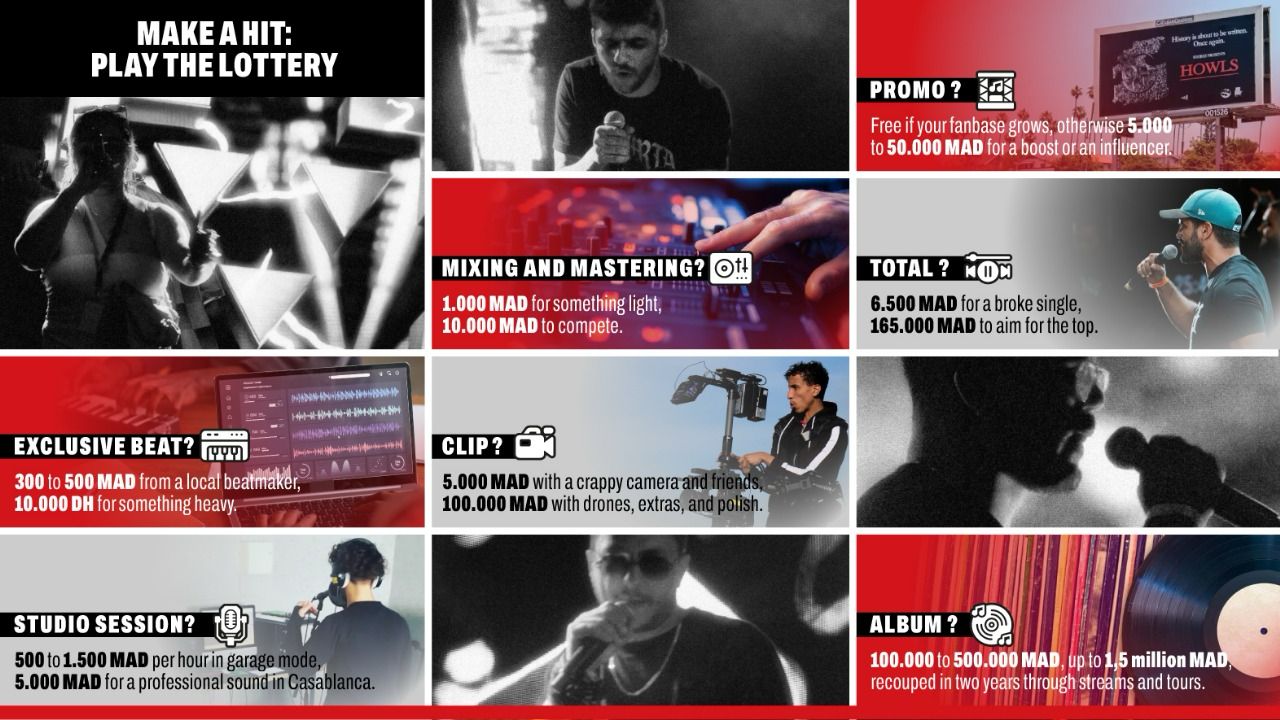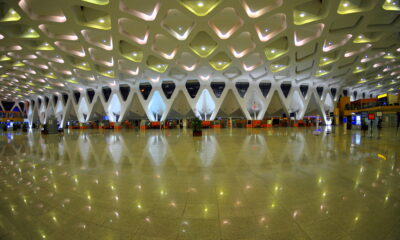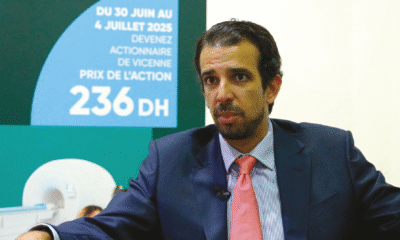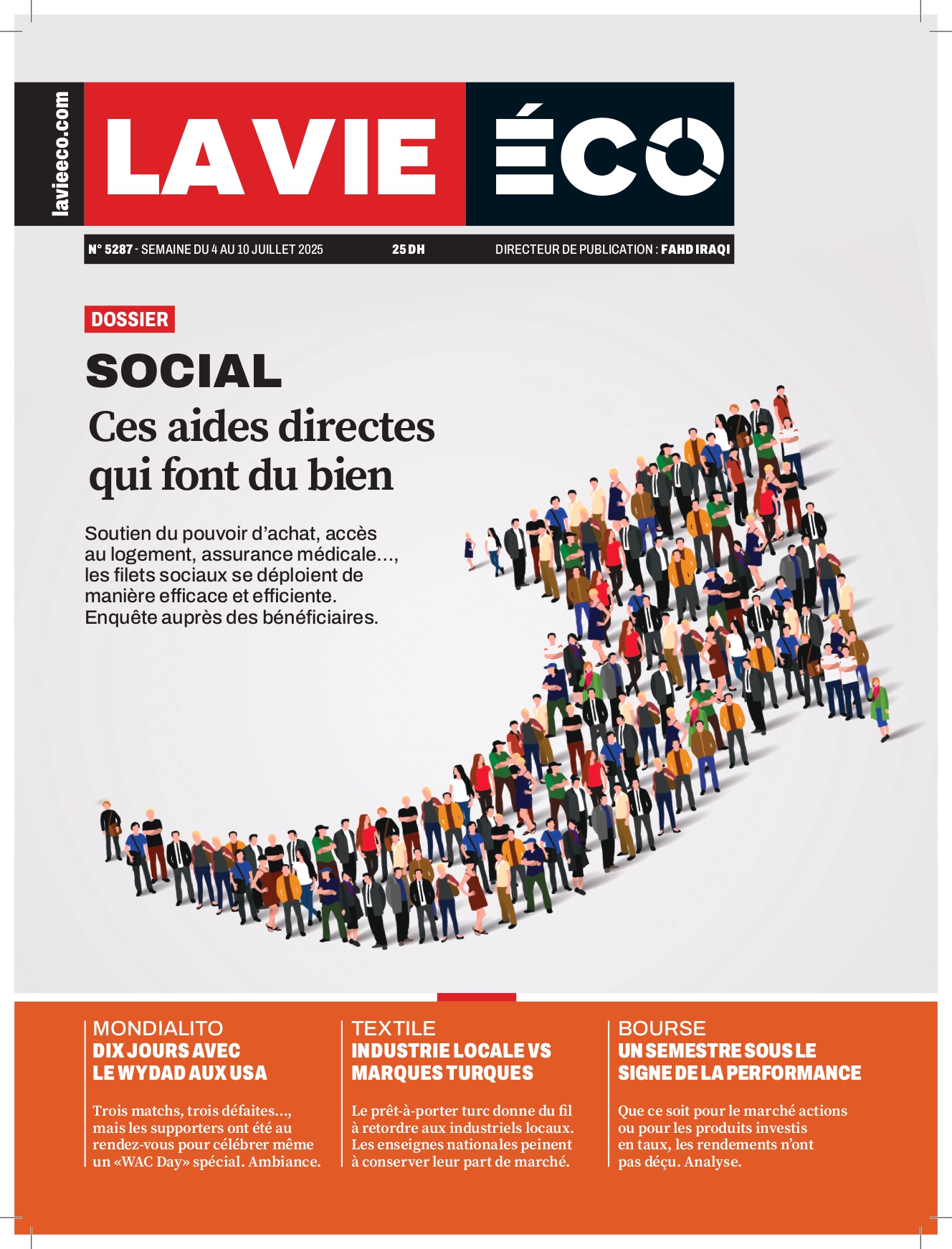Business
Rap Industry: The Beats Make Bank
Moroccan-made rap ignites, raw and untamed. From Bigg to ElGrandeToto, through Dizzy Dros and 7liwa, Darija hits hard, beats slam, cash pours in. A revolt screams from the streets, shakes the music industry, and aims for the stars—between rage, hustle, and playlists.
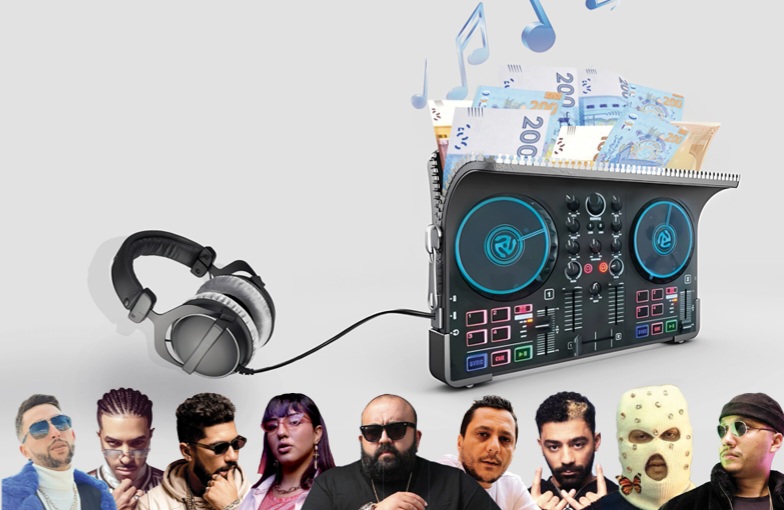
Timid and shaky in its infancy, Moroccan rap erupted like spring primroses—wild, untamed—until it became a sonic army no cop can silence. “Every year at the Boulevard des Jeunes Musiciens Festival, we get slammed with a flood of demos, a hundred minimum. There’s gotta be a thousand acts in there,” marvels Mohamed Merhari, aka Momo, the festival’s high priest.
From Tangier to Lagouira, neighborhood youngsters spit their truths over heavy beats, asphalt morphs into a stage, Darija into a blade. Hip-hop, with rap as its spearhead, swept through Morocco and rattled a music industry long stuck in syrup. Here’s the story of a revolt that shouts, thrashes, and rakes in victories.
A Genesis in Sweat
Rewind. The 80s—teenagers (yé-yé survivors) get hooked on smurfing and breakdancing, snatched from the grimy alleys of the Bronx. Plazas, public gardens, building corridors, tunnels: breakers squat, spin on their heads atop plastic mats to nail headspins, defying cops and gravity.
In 1984, agency AlGhazali sniffs out the trend and drops a smurf competition at Casablanca’s Mohammed V Complex. The bleachers shake, total frenzy: thousands of kids dive into street dance, bodies flying, fever rising.
Rap, though, takes its time. The 90s sound the assault. In Casablanca, M. Youss, Abdelghani, and Naïm—a volcanic trio—set fire to Cage Club and Club 84 every weekend. “The hip-hop sauce is bubbling in there,” said DJ Key, keeper of the early sparks, in an interview. Then Aminoffice and Ahmed, the “Double A,” drop the country’s first rap album—a bombshell shattering MCs’ underground.
“The genre began spreading through cassettes (…) Most acts, nearly all, rapped in French and especially English,” recalls Momo. 1999: L’Boulevard ignites, a furnace for hip-hop, rock, metal, fusion. The chosen—H-Kayne, Fnaïre, Casa-Crew, and Bigg among them—take off, loudspeakers for a youth screaming its angst.
Rap Tsunami
A tidal wave swallowing everything, hip-hop juiced on rap—first hesitant, almost timid, then wrecking it all. Everywhere, crews multiply, countless, fueled by a fever infesting every corner of the country. In battered barrios, kids roar about fraud, injustice, stigma—rap becomes their megaphone, their street school.
Long scorned, this rebel sound detonates with Dizzy Dros’ 3azzy 3ando stylo (2013), a near-sacred anthem. But it’s 7liwa, the kid from Casablanca’s gritty underbelly, who lights the fuse for a generation.
With his wobbly flow and raw visuals (Batal l3alam, 2014), he forces a visceral, off-kilter rap that reeks of dust and concrete. “7liwa is the mirror of Moroccans, the dude turning Ls into gold,” reads one take on him. He sparks a wave of kids dreaming of mic-in-hand MC glory, fury in their guts. Then comes ElGrandeToto, the ace of hearts stealing the game.
Today, at 28, this Casablancan with razor lyrics and magnetic charisma owns the scene. Caméléon (2021) blows up—50 million streams—but it’s his grind, from asphalt to Paris’ Zénith arena, that captivates. “I grew up in a hood where you pick between slinging or spitting,” he admitted at the album’s preview.
Since 7elmat Ado, he keeps swinging, blending trap and melancholy, carried by fans screaming his bars like psalms. “Moroccan rap is growing, sharpening its edge, taking bold turns,” noted Mark Abou Jaoude, Deezer MENAT’s content head in 2021, praising a Maghreb sound twisting local and global.*
Purists gripe: rap softens, turns commercial, more dancefloor. Trap, cloud rap, hardcore, parody, activism—it splinters endlessly, treasure to some, betrayal to others. But it holds fast: raw and total art.
A Beat-Driven Business
Behind the punchy rhymes, cash stacks up. Rap dominates 80-90% of local streams in Morocco’s 2024 music market, valued at 255.6 million dirhams. ElGrandeToto racks up 50 million streams for Caméléon: 200,000 MAD on Spotify, 1.8 million MAD on YouTube. Live gigs pay big: 10,000–50,000 MAD domestically, up to 500,000 MAD abroad.
“You can blow up from your bed, but to last, you need a team, a vision, and cash,” says Junk, 18, a rookie dreaming of stacking views and collabs with top-tier producers.
Music videos level up. Gone are shaky cams and messy edits. Since the Canon 5D (2008) and 4K Black Magic cameras, shots widen, sets breathe, storylines thicken. “A killer video? That’s the key to launch a track,” says Reda Lahmouid, director behind Ouenza’s Ma3ndich L7a9 ft. Nessyou and Zulu Nawfel. Fans loved it; streams skyrocketed.
Strategy
In Moroccan rap, your name is a weapon. Bigg, 7liwa, ElGrandeToto: aliases that hit hard, rooted in the streets or aiming for the stars. Picking a stage name is an art—part wink, part SEO, part raw instinct. 7liwa’s cryptic handle channels the soul of the unheard. ElGrandeToto plays the larger-than-life charisma card.
His latest album title, Salgoat, is now a streetwear brand. “A name is your passport,” he says. In a game ruled by social media, a poorly crafted alias can sink you. Consonants pile up, vowels vanish—just make sure they find you.
Then there’s the single, the old warhorse making a comeback. Declared dead with CDs, it’s reborn on playlists. “It’s livelier than ever,” labels agree. In Morocco, 7liwa (Marfoud) or ElGrandeToto (Weld Laadoul) pack venues with a handful of sharp tracks. Streaming sets the rules: a hard-hitting chorus, under three minutes, and loop-ready.
“The single opens doors, gets people talking,” says Hero (1st prize, 2023 L’Boulevard Rap/Hip-Hop Competition). But beware formula: labels sometimes demand cookie-cutter hits, even if it guts the vibe. Data rules all—if your track tanks before the chorus, you’re dead. An album? A puzzle.
Track order is a battle. “It can take weeks,” notes XXXRays (2nd prize, 2023 L’Boulevard). For ElGrandeToto, albums are narratives: dark to bright, each track a scene. “You need a journey, not just a pile,” he says. Platforms change the game: the first two tracks hog all the streams; the rest fade.
In Morocco, rappers juggle opening bangers and hidden gems, chasing playlists without selling their soul.
The Playlist!
Playlists are the holy grail. Spotify’s “Today’s Hits,” Deezer’s “Tracks of Now”: millions of ears a click away. Rappers from the bled get it—a well-pitched track to editors can climb to flagship playlists. Algorithms and humans split power: data scrutinizes, curators decide. But finesse is key—not just a hit, a whole universe.
“Without staying power, you’re a flash in the pan,” warns Hashym Benmessaoud, a behind-the-scenes force who guided Anys and Abduh. Moroccan rappers are accidental entrepreneurs. They write, produce, film, flood socials, negotiate sponsors (20,000–100,000 MAD).
With no major-label safety nets or abundant stages—just a few decent home studios, ~20 pro studios, and a handful of real venues—they thrive on darija, high-stakes international collabs (50,000–200,000 MAD), and ironclad hustle. “We do it all: beats, videos, promo, everything,” says our guy Junk.
Not just MCs, but bosses of their own empires. Moroccan rap aims high, but walls loom. Piracy, censorship—Gnawi pays for his raw lyrics—crumbling infrastructure: hurdles pile up. On the flipside, Pause Flow clashing L’Morphine, Dollypran, and others exposes fractures—egos, cash, purism.
Many duck the drama, like Toto, now packing his bags for foreign shores. Yet the scene swells. Budgets explode (2–5 million MAD per project by 2025), rappers like Khtek break through, rap mutates—trap, cloud, hardcore, activism. “A wealth, not a downfall,” insists one music buff.
Detonation
Warner Music MENA launches a major push to turbocharge Moroccan sound, enlisting three rap/urban heavyweights: Dizzy Dros, Snor, and Kouz1. These artists, each with a singular style, have already left an indelible mark on Morocco’s sonic landscape. Now, under Warner Music MENA, they’re set to conquer global horizons.
“In this industry, your team shapes your vision. Aligning with Warner Music MENA’s squad was crucial,” says Amine El Bied, CEO of Mimesis Prod (Kouz1’s label and home to rising star Rym, also signed to Warner Music in North Africa).
A long-standing collab highlighting trust in the label to propel Moroccan talent. Imane Fassah, Warner Music MENA’s GM for North Africa, beams: “We’re thrilled to welcome Dizzy Dros, Kouz1, and Snor to the Warner family. Each brings something unique, and we’re hyped to push boundaries with them. This is Moroccan music’s moment—we can’t wait to share their art worldwide.”
With these signings, Warner Music MENA lays ambitious groundwork to amplify Moroccan rap and urban music far beyond the Kingdom’s borders. “The snubbers will bite their fists,” thunders Toto, prophet of the hustle. Numbers don’t lie: Morocco’s rapping loud, and it hits hard. Yow yow!
